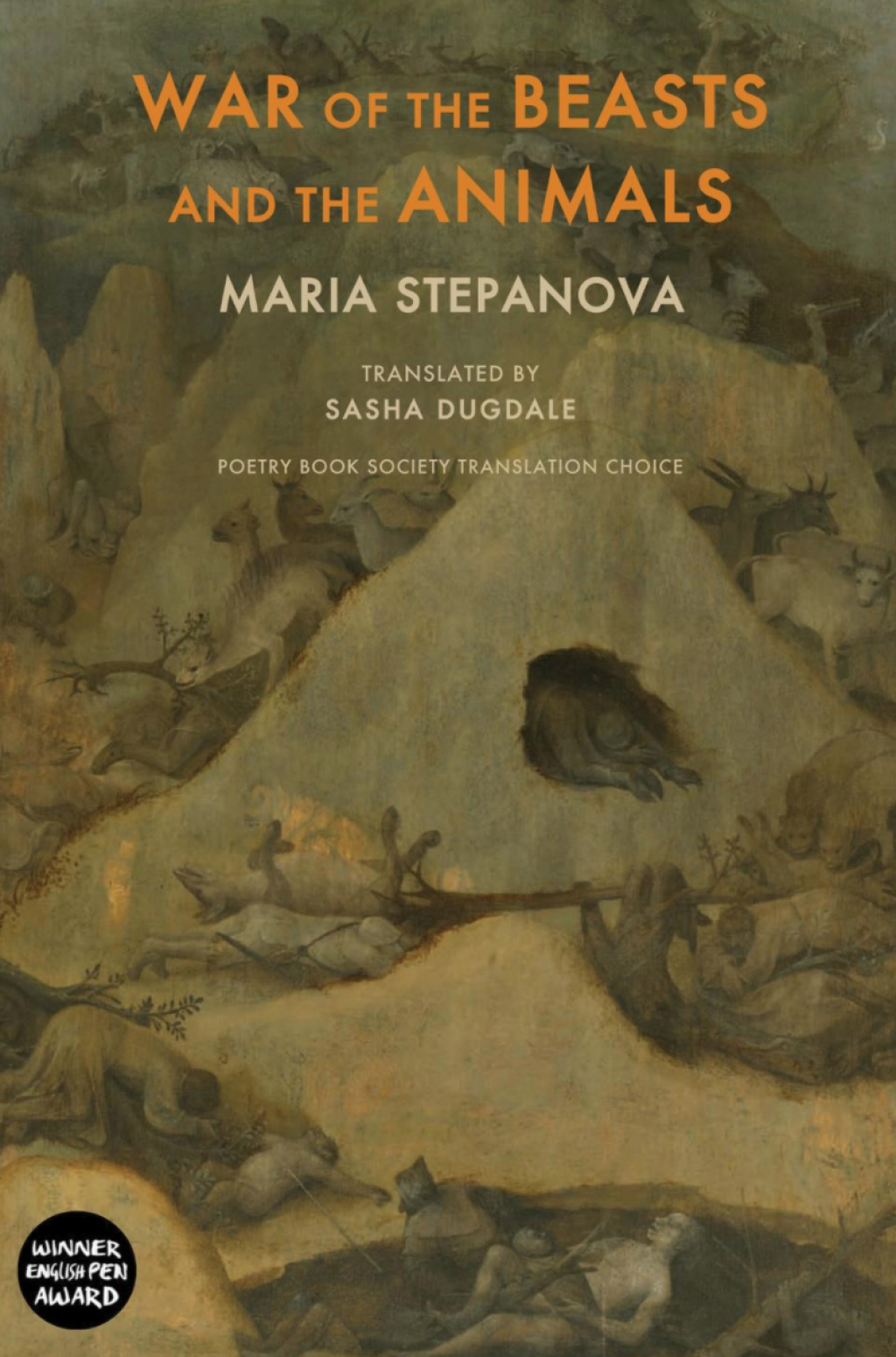Ani Kokobobo is an Assistant Professor of Slavic Languages and Literatures at the University of Kansas
While gathering reviews of film adaptations of Anna Karenina for an upcoming, special issue of the Tolstoy Studies Journal, “Anna Karenina in the 21st Century” (more on this at the end), I came across a 2015 Australian adaptation of the novel, “The Beautiful Lie.” Directed by Glendyn Ivin and Peter Salmon, the rich, six-part reimagining of Tolstoy’s novel sheds Anna Karenina’s nineteenth-century context and transposes the story to contemporary times. The series focuses on the marriage of professional tennis players, Anna and Xander Ivin (played by Sarah Snook and Rodger Corser), and Anna’s affair with music producer Skeet Du Pont (Benedict Samuel). Preserving Tolstoy’s multi-plot structure, “The Beautiful Lie” also chronicles the lives of veterinarian and farm owner, Peter Levin (Alexander England), his love interest Kitty Ballantyne (Sophie Lowe), and her sister, Dolly Faraday (Celia Pacquola), who is married to Anna’s brother, Kingsley Faraday (Daniel Henshall). Although they loosely recreate Tolstoy’s basic plots and themes, the producers of “The Beautiful Lie” irreverently modernize Anna Karenina by grounding the series in the present and focusing on more contemporary questions. Despite its surprisingly conservative bent, the series reaffirms the continued relevance of Tolstoy’s masterpiece and brings out the insights Anna Karenina still offers about marriage, sexuality, and happiness in the twenty-first century.
With nineteenth-century prohibitions cast aside, sexuality is no longer prurient, but is emphasized as an essential element of modern identity in “The Beautiful Lie.” Perhaps in keeping with the novel of adultery, which, in the words of Bill Overton, was a “novel of female adultery,”[1] this foregrounding of sexuality revolves around women. Unlike in Tolstoy’s original, where Anna and Levin were the two central protagonists, “The Beautiful Lie” focuses primarily on female characters by first juxtaposing Dolly and Anna and later juxtaposing Kitty and Anna. The directors zero in on female desire, its maturation and various outlets, its place in a marriage, and how it can be depleted by child-bearing.
Anna Ivin is at the center of this portrayal of feminine desire as the only female character that starts the series in touch with her sexuality. The directors of “The Beautiful Lie” give her the kind of agency and ownership over her libido that Anna Karenina does not have. By contrast, the Ballantyne sisters, Kitty and Dolly, start out with sexualities that are more dormant or in flux; Kitty is out of touch with her libido, whereas Dolly’s libido is exhausted by years of raising children on her own. Both women undergo processes of sexual awakening and maturation in the series, by the end emerging happier and more confident. Their desires are productively channeled into marriage, as Kitty marries Peter Levin and has a baby, whereas Dolly works on her marriage with Kingsley, while also becoming a justice of the peace and reinforcing the institution of marriage.
This obvious privileging of the heterosexual marriage as an ideal for both Dolly and Kitty suggests that even as it portrays sexuality openly, “The Beautiful Lie” insists that this sexuality must be controlled. Instead of letting loose their libidos, individuals are expected to make a “project” of their lives and to ensure that their marriages are successful.[2] In a major discrepancy from the novel where Stiva is an incorrigible philanderer, Kingsley in the series learns his lesson and gets his family back by controlling his libido and not cheating on his wife anymore. In fact, Kingsley and Gabriella, the nanny, master their desires to the point that they cohabitate platonically under the same roof (with Dolly keeping watch, of course).
By the conclusion of the series, most characters, including Anna’s boring husband, Xander, achieve happiness through monogamous, heterosexual relationships. On the other hand, those who cannot compromise and do the ‘work’ required to spice up or mend their relationships are unceremoniously excised from this general picture of romantic bliss. Most notably, Anna Ivin, whose affair proves as devastating as in the original novel, ends up under the train like her namesake, Anna Karenina. While everyone else is working toward heteronormative, married happiness, Anna Ivin deconstructs her upper middle class married life by beginning an affair with Skeet DuPont. Driven by love, lust, and a little restlessness, Anna views Skeet as her soul mate but resists replicating the same upper middle class life with him. Unable to move forward with him, she nostalgically returns to her past and tries to re-experience the home she shared with her husband, while living with her lover. In this sense, she significantly differs from other characters in the series that know what they want and set out to make their desires a reality.
All Unhappy Families
The question of being aware of one’s desires calls to mind a late essay by Michel Foucault about “technologies of the self” in which he recalls two maxims passed down to us from the ancient Greeks: “Know yourself” and “Take care of yourself.” As Foucault argues, in contemporary Western society we have given precedence to knowing (and implicitly mastering) ourselves over caring for ourselves.[3] In making their lives into a project and mastering their desires, most characters in “The Beautiful Lie” show supreme knowledge of themselves, which they use to channel their desires toward certain goals. As the series illustrates, in our time, there is a definite expectation that people know what they want and ensure their own happiness. Divorce and adultery are marked as failures. And the inability to repent or start up a new marriage after adultery is an even more profound failure.
In Anna’s case, however, we see a different approach to the world, as confusion and instinct supplant rational self-knowledge. The contemporary setting, in which the patriarchal social structure is absent, adultery is less notorious, and divorce and child custody are easier to negotiate, only emphasizes the profound confusion that Anna experiences in the original novel as well. Anna Ivin neither knows what she wants nor wants what is supposedly good for her. “You must have known what you were doing,” declares Skeet’s mother to her about the affair, but the words ring hollow and judgmental. Skeet’s text to Anna, which refers to their affair as “inevitable,” is a more helpful perspective in terms of explaining her motivations.
With her confusion of desires, attachment to the past and disinterest in her daughter who symbolizes the future with Skeet, Anna Ivin might be seen as an “oppositional queer subject” in the series. According to queer theorists like Jack Halberstam and Lee Edelman,[4] instead of seeking and partaking in a “viable political future,” queer subjects represent “resistance, internal to the social, to every social structure or form.”[5] Anna Ivin the deadbeat mother neither seeks a divorce in order to remarry, nor repents in order to return to her previous marriage; she only experiences overwhelming, painful desire. We might define this experience as a pursuit not of happiness but of jouissance – desire that transcends normative pleasure boundaries to the point that it can become destructive for the subject. In her jouissance and eschewal of the heteronormative family, Anna represents elements of the queer resistance toward conventional social patterns, a resistance partly framed as a resistance to rational knowledge of oneself. “The queerness of which I speak” writes Edelman, “would deliberately sever us from ourselves, from the assurance, that is, of knowing ourselves and hence of ‘good.’”[6] Instead of rushing to plan her future family happiness, Anna Ivin prefers the muddled state of marital openness that occasionally, at least until her ex-husband has a girlfriend, grants access to the past.
Yet Anna Ivin does not find much of a place for herself in the universe of “The Beautiful Lie,” which reinforces the importance of marriage and the nuclear family. Her awkward arrival and subsequent removal from Kitty and Levin’s wedding is perhaps the most obvious instance of her outsider status. She is cast out of the world of happy heterosexual couples and families, and so are Levin’s brother, Nick, who drinks and has foursomes, and the lesbian woman Kitty meets in the course of getting treatment for bulimia. Paradoxically, perhaps, despite the open displays of sexuality in “The Beautiful Lie,” Tolstoy’s original, more prudish novel communicated much more skepticism about the institution of marriage and ultimately proved more progressive in its cultural politics. Although the adulteress is punished, or, we might argue, rides her own jouissance to her death, Tolstoy’s original Anna Karenina questioned marriage, as the spiritually renewed Levin did not share his revelation about not living for the belly with his wife.
In this sense, Anna Ivin, who is ultimately not pursuing happiness but a deeper and more intense form of living and loving, has much more in common with Anna Karenina and her original creator, Tolstoy, than with other characters in “The Beautiful Lie.” Tolstoy had his share of conversions and breakdowns and eventually outgrew the idea of personal happiness as an end goal for novels or life. In many of his later, post-conversion works he advanced his obvious preference for patterns of kinship outside of marriage; for instance, in The Kreutzer Sonata, the author advocated that people should not marry or reproduce, but instead live in sexless communes like bees. The fact that this sort of existence would rob humanity of its children and the familial future did not bother him. Instead, Tolstoy envisioned an alternative, perhaps queer version of life grounded on the present and everyday moral behavior.
Twenty-First Century Schizoid Man
The revelation that Tolstoy’s original Anna Karenina and his thought might actually be more radical than its contemporary, sexier adaptation makes for a good basis from which we can advocate for Tolstoy’s relevance and legacy in our time. The question of Tolstoy’s relevance in the twenty-first century, and, more specifically, the significance of Anna Karenina is taken up in a forthcoming issue of the Tolstoy Studies Journal that is co-edited by myself, Emma Lieber, and Michael Denner. This special issue features five articles (by David Herman, Emma Lieber, Anne Lounsbery, Ani Kokobobo, and Rose-Myriam Réjouis and Val Vinokur) that focus on the 2012 “Anna Karenina” film directed by Joe Wright as well as the more recent Australian adaptation I have discussed. The issue also more broadly connects the novel to twenty-first century ideas about marriage, adultery, as well as twenty-first century views on the body and sexuality as exhibited in American pop culture and reality TV phenomena like the The Kardashians. For the benefit of the Slavist reader we also include over twenty film reviews of film adaptation of Anna Karenina from the early twentieth-century to the present. Once the issue has been published and distributed, these reviews will also be made available online through the Tolstoy Studies Journal website.
Notes
[1] The Novel of Female Adultery – Love and Gender in Continental European Fiction, 1830-1900 (London: Palgrave, 1006), 1.
[2] Nicholas Rose, Inventing Ourselves: Psychology, Power, and Personhood (Cambridge: Cambridge UP, 1996), 154.
[3] Foucault “Technologies of the Self,” in Technologies of the Self: A Seminar with Michel Foucault, ed. Luther Martin, Huck Gutman, Patrick Hutton (Amherst: University of Massachusetts Press, 1988), 26.
[4] See: Lee Edelman, No Future: Queer Theory and the Death Drive (Durham: Duke University Press, 2004); Judith Halberstam, The Queer Art of Failure (Durham: Duke University Press, 2011).
[5] Edelman, 4.
[6] Ibid., 5.





